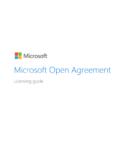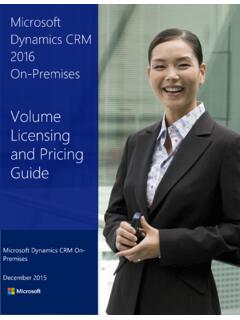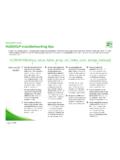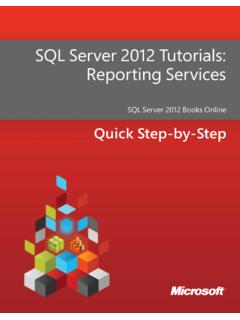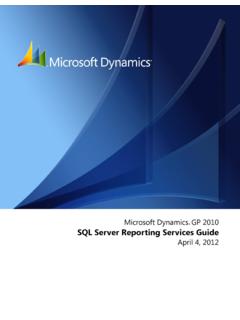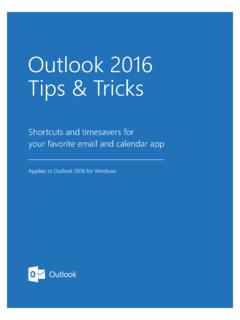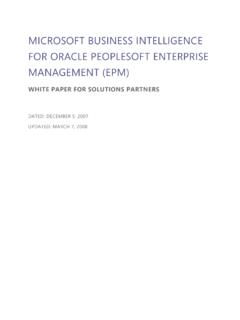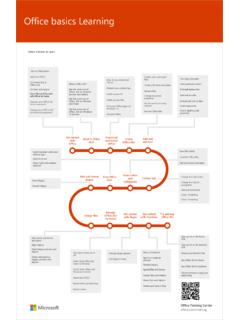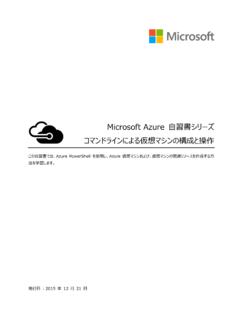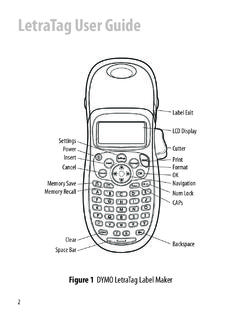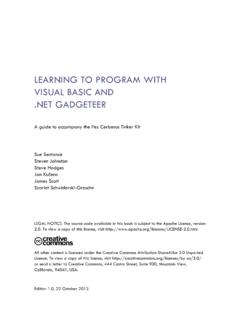Transcription of Microsoft Small Basic
1 Microsoft Small Basic An introduction to Pr ogramming Chapter 1 An Introduction Small Basic and Programming Computer Programming is defined as the process of creating computer software using programming languages. Just like we speak and understand English or Spanish or French, computers can understand programs written in certain languages. These are called programming languages. In the beginning there were just a few programming languages and they were really easy to learn and comprehend. But as computers and software became more and more sophisticated, programming languages evolved fast, gathering more complex concepts along the way. As a result most modern programming languages and their concepts are pretty challenging to grasp by a beginner.
2 This fact has started discouraging people from learning or attempting computer programming. Small Basic is a programming language that is designed to make programming extremely easy, approachable and fun for beginners. Small Basic s intention is to bring down the barrier and serve as a stepping stone to the amazing world of computer programming. The Small Basic Environment Let us start with a quick introduction to the Small Basic Environment. When you first launch SmallBasic, you will see a window that looks like the following figure. Figure 1 - The Small Basic Environment This is the Small Basic Environment, where we ll write and run our Small Basic programs. This environment has several distinct elements which are identified by numbers.
3 The Editor, identified by [1] is where we will write our Small Basic programs. When you open a sample program or a previously saved program, it will show up on this editor. You can then modify it and save if for later use. You can also open and work with more than one program at one time. Each program you are working with will be displayed in a separate editor. The editor that contains the program you are currently working with is called the active editor. The Toolbar, identified by [2] is used to issue commands either to the active editor or the environment. We ll learn about the various commands in the toolbar as we go. The Surface, identified by [3] is the place where all the editor windows go. Our First Program Now that you are familiar with the Small Basic Environment, we will go ahead and start programming in it.
4 Like we just noted above, the editor is the place where we write our programs. So let s go ahead and type the following line in the editor. ("Hello World") This is our first Small Basic program. And if you have typed it correctly, you should see something similar to the figure below. Figure 2 - First Program Now that we have typed our new program, let s go ahead and run it to see what happens. We can run our program either by clicking on the Run button on the toolbar or by using the shortcut key, F5 on the keyboard. If everything goes well, our program should run with the result as shown below. Figure 3 - First Program Output Congratulations! You have just written and run the first Small Basic program. A very Small and simple program, but nevertheless a big step towards becoming a real computer programmer!
5 Now, there s just one more detail to cover before we go on to create bigger programs. We have to understand what just happened what exactly did we tell the computer and how did the computer know what to do? In the next chapter, we ll analyze the program we just wrote, so we can gain that understanding. As you typed your first program, you might have noticed that a popup appeared with a list of items (Figure 4). This is called intellisense and it helps you type your program faster. You can traverse that list by pressing the Up/Down arrow keys, and when you find something you want, you can hit the Enter key to insert the selected item in your program. Figure 4 - Intellisense Saving our program If you want to close Small Basic and come back later to work on the program you just typed, you can save the program.
6 It is in fact a good practice to save programs from time to time, so that you don t lose information in the event of an accidental shutdown or a power failure. You can save the current program by either clicking on the save icon on the toolbar or by using the shortcut Ctrl+S (press the S key while holding down the Ctrl key). Chapter 2 Understanding Our First Program What really is a computer program? A program is a set of instructions for the computer. These instructions tell the computer precisely what to do, and the computer always follows these instructions. Just like people, computers can only follow instructions if specified in a language they can understand. These are called programming languages. There are very many languages that the computer can understand and Small Basic is one.
7 Imagine a conversation happening between you and your friend. You and your friends would use words, organized as sentences to convey information back and forth. Similarly, programming languages contain collections of words that can be organized into sentences that convey information to the computer. And programs are basically sets of sentences (sometimes just a few and sometimes many thousands) that together make sense to both the programmer and the computer alike. Small Basic Programs A typical Small Basic program consists of a bunch of statements. Every line of the program represents a statement and every statement is an instruction for the computer. When we ask the computer to execute a Small Basic program, it takes the program and reads the first statement.
8 It understands what we re trying to say and then executes our instruction. Once it s done executing our first statement, it comes back to the program and reads and executes the second line. It continues to do so until it reaches the end of the program. That is when our program finishes. There are many languages that the computer can understand. Java, C++, Python, VB, etc. are all powerful modern computer languages that are used to develop simple to complex software programs. Back to Our First Program Here is the first program we wrote: ("Hello World") This is a very simple program that consists of one statement. That statement tells the computer to write a line of text which is Hello World, into the Text Window. It literally translates in the computer s mind to: Write Hello World You might have already noticed that the statement can in turn be split into smaller segments much like sentences can be split into words.
9 In the first statement we have 3 distinct segments: a) TextWindow b) WriteLine c) Hello World The dot, parentheses and the quotes are all punctuations that have to be placed at appropriate positions in the statement, for the computer to understand our intent. You might remember the black window that appeared when we ran our first program. That black window is called the TextWindow or sometimes referred to as the Console. That is where the result of this program goes. TextWindow, in our program, is called an object. There are a number of such objects available for us to use in our programs. We can perform several different operations on these objects. We ve already used theWriteLine operation in our program. You might also have noticed that the WriteLine operation is followed by Hello World inside quotes.
10 This text is passed as input to the WriteLine operation, which it then prints out to the user. This is called an input to the operation. Some operations take one or more inputs while others don t take any. Our Second Program Now that you have understood our first program, let s go ahead and make it fancier by adding some colors. = "Yellow" ("Hello World") Punctuations such as quotes, spaces and parenthesis are very important in a computer program. Based on their position and count, they can change the meaning of what is being expressed. Figure 5 - Adding Colors When you run the above program, you ll notice that it prints out the same Hello World phrase inside TextWindow, but this time it prints it out in yellow instead of the gray that it did earlier.
